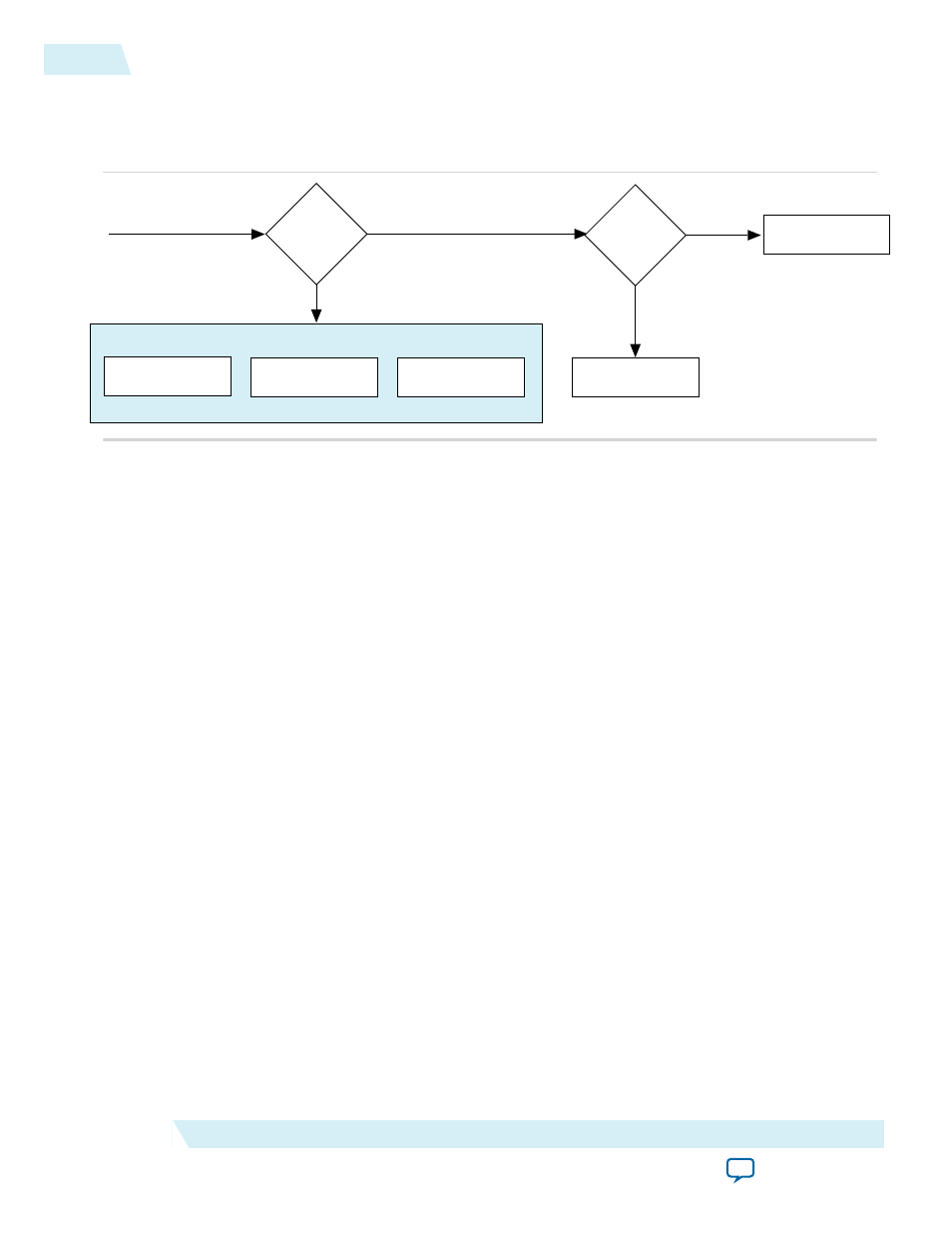Link training, Link training -2 – Altera Arria 10 Avalon-ST User Manual
Page 260

The following sections, describe how to debug the hardware bring-up flow. Altera recommends a
systematic approach to diagnosing bring-up issues as illustrated in the following figure.
Figure 18-1: Debugging Link Training Issues
No
system reset
Does Link
Train
Correctly?
Check PIPE
Interface
Use PCIe
Analyzer
Soft Reset System to
Force Enumeration
Check Configuration
Space
Check LTSSM
Status
Yes
Yes
No
Successful
OS/BIOS
Enumeration?
Link Training
The Physical Layer automatically performs link training and initialization without software intervention.
This is a well-defined process to configure and initialize the device's Physical Layer and link so that PCIe
packets can be transmitted. If you encounter link training issues, viewing the actual data in hardware
should help you determine the root cause. You can use the following tools to provide hardware visibility:
• SignalTap II Embedded Logic Analyzer
• Third-party PCIe analyzer
You can use SignalTap II Embedded Logic Analyzer to diagnose the LTSSM state transitions that are
occurring on the PIPE interface. The
ltssmstate[4:0]
bus encodes the status of LTSSM. The LTSSM
state machine reflects the Physical Layer’s progress through the link training process. For a complete
description of the states these signals encode, refer to Status, Link Training and Reset Signals. When link
training completes successfully and the link is up, the LTSSM should remain stable in the L0 state. When
link issues occur, you can monitor
ltssmstate[4:0]
to determine the cause.
Related Information
Reset, Status, and Link Training Signals
Debugging Link Failure in L0 Due To Deassertion of tx_st_ready
There are many reasons that link may stop transmitting data. The following table lists some possible
causes.
18-2
Link Training
UG-01145_avst
2015.05.04
Altera Corporation
Debugging